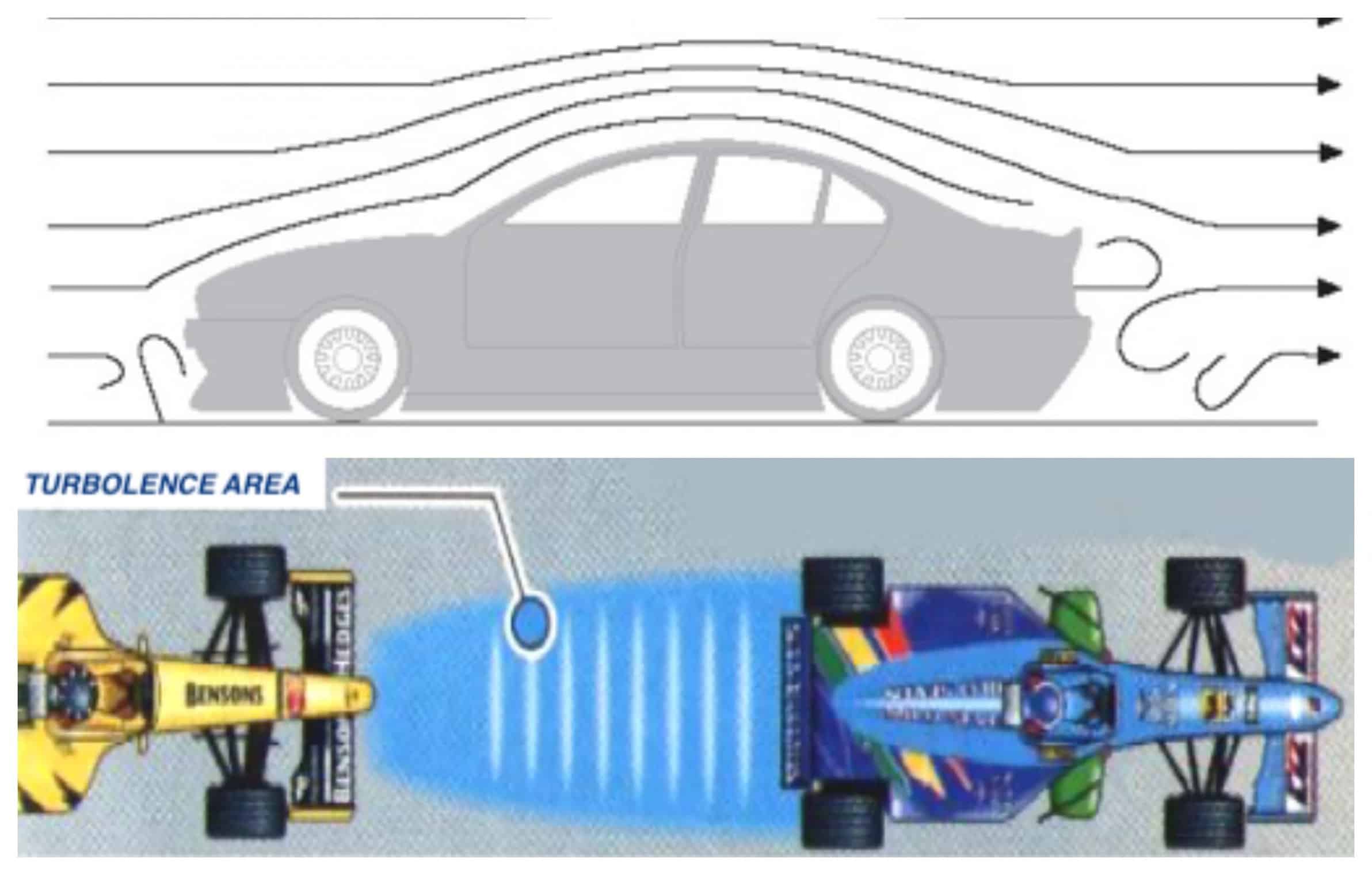Why is it more difficult to overtake a large vehicle than a car
Aerodynamic tow and wake turbulence
Aerodynamic tow and overtaking a vehicle.
A moving vehicle interacts with the air it encounters, and moves it. A turbulence and a low-pressure zone are created behind the vehicle in which the air re-occupies the region of space from which the car has just left. This occurs, for example, due to the different pressure between the low surface and the upper surface of the wing which takes the air to compensate the areas of depression passing through the wingtips. Another way to create strong vortices is due to wheels rotation. Due to the motion of the vehicle, the vortices generated by the vehicle go towards the back.
Hamilton-Vettel battle at Spa.
An example of the advantage of aerodynamic tow is the battle between Ferrari and Mercedes at Spa (2017-2018). You may appreciate the difficulty in the overtaking of Vettel (2017) when he gets out of the slipstream of Hamilton .You can see Hamilton-Vettel battle on Kemmel (Spa) on Youtube here.
This turbulence zone, which consists of a series of swirling motions of the fluid that loses its laminar flow, is in continuous movement and evolution and follows the car that generates it: it is called aerodynamic slipstream or tow.
Aerodynamic tow: a drag benefit and a downforce handicap .
The aerodynamic slipstream of a car significantly influences the aerodynamic force produced by the car that follows it. The effect of the tow is stronger as the cars get closer, while it weakens with the passage of time and with the increasing of space.
When one car approaches another, the aerodynamic surfaces of the “tracker” work in the tow generated by the preceding car, and therefore encounter turbulent air in movement and with less pressure than that in which they work in ideal conditions.
The speed of race cars is higher, with the same engine power engaged, when they run in pairs one behind the other at a very short distance, compared to when they run separate, because the drag opposed by the air decreases. Depending on the speed, when the two cars run a few lengths apart, both are affected by the aerodynamic advantages of the other car, especially the one that follows, which manages to run at the same speed as the first car by engaging a lower engine power, because behind the first car an aerodynamic slipstream of depression is formed which “sucks” the second car. This “reserve” of engine power allows the second car to overtake the first.
The tow, in other words, inhibits the functionality of ailerons and flaps that no longer generate the same downforce by not being hit by the energized undisturbed flow.
Why is it more difficult to overtake a large vehicle than a car?
As just said (we also dedicated an entire article here), drag force is proportional to the square of speed and to the area of the vehicle. The larger the vehicle in front of you, the higher is the depression behind it. This depression constitutes a stonger aerodynamic toe for the car is following. For this reason, when following a large vehicle you can save fuel (to maintain the same speed the car requires less energy from the engine). On the other hand, when you decide to overtake a larger vehicle your car faces “an air wall” since you can no longer benefit of the powerful aerodynamic tow.





